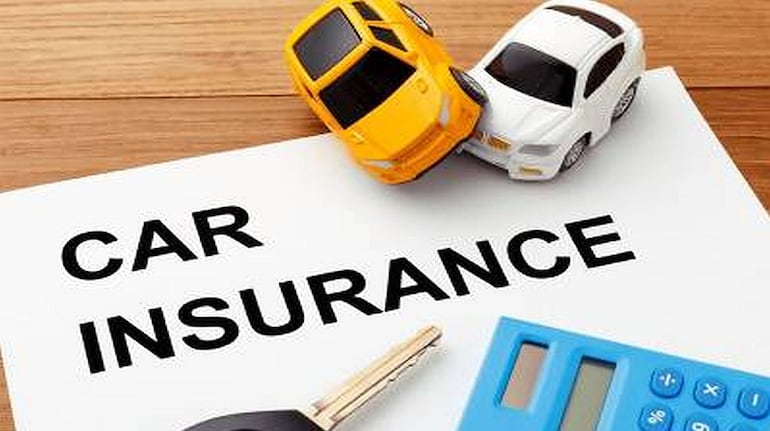Auto insurance is an essential part of owning and driving a vehicle in the United States. Whether you are a seasoned driver or a new one, understanding the role of auto insurance is crucial for protecting both yourself and your vehicle. This guide will break down the importance of auto insurance, the different types of coverage available, and why it’s necessary for your peace of mind and financial security.
Why Auto Insurance is Important
In simple terms, auto insurance is designed to protect you financially in the event of an accident, theft, or damage to your vehicle. It provides coverage for the costs associated with repairs, medical expenses, and any legal obligations you might face. Without insurance, you could be left to handle these expenses on your own, which can quickly lead to significant financial strain.
In many states, auto insurance is not just recommended; it is legally required. Each state sets a minimum coverage amount that drivers must carry, ensuring that if you are involved in an accident, there is financial assistance to cover damages and injuries. Even if you live in a state that doesn’t mandate auto insurance, it is still a smart choice for protecting yourself and your vehicle.
Key Types of Auto Insurance Coverage
Understanding the different types of auto insurance coverage is key to choosing the right policy for you. Each type of coverage addresses specific needs and scenarios, so it’s important to tailor your policy to match your driving habits, the value of your car, and your risk tolerance.
1. Liability Coverage
Liability coverage is the most basic and often the minimum required by law. This coverage helps pay for the costs of injuries or property damage caused by you in an accident. It’s broken down into two components:
- Bodily Injury Liability: This part covers medical expenses for others who are injured in an accident where you are at fault. It can also cover lost wages and legal fees if you are sued.
- Property Damage Liability: This part helps pay for repairs to another person’s vehicle or property that you damage in an accident.
Liability coverage does not cover your injuries or vehicle damage. However, it’s crucial for meeting legal requirements and protecting you from financial strain if you are responsible for an accident.
2. Collision Coverage
Collision coverage helps pay for repairs to your own vehicle after an accident, regardless of who is at fault. If you hit another car, a fence, or a tree, this coverage will pay for the repairs to your vehicle. If your car is deemed a total loss (when the cost of repairs exceeds the car’s value), collision coverage will help pay you the actual cash value (ACV) of your vehicle.
Although collision coverage is optional, it’s often recommended if you have a newer or more expensive vehicle. For older cars, it may not make financial sense to pay for this coverage if the car’s value is low.
3. Comprehensive Coverage
Comprehensive coverage goes beyond accidents. It helps pay for damage to your vehicle caused by non-collision events like theft, vandalism, fire, natural disasters, or hitting an animal. For example, if a tree falls on your car during a storm or if your vehicle is stolen, comprehensive coverage will help cover the costs.
Like collision coverage, comprehensive coverage is typically optional, but it’s highly recommended for those who want extra peace of mind and protection against a wide range of risks.
4. Uninsured and Underinsured Motorist Coverage
Even though auto insurance is mandatory in most states, not everyone follows the law. Uninsured motorist (UM) and underinsured motorist (UIM) coverage protect you if you’re involved in an accident with someone who doesn’t have enough insurance or no insurance at all.
UM coverage helps pay for your medical expenses and car repairs if the at-fault driver lacks insurance. UIM coverage comes into play when the other driver has insufficient insurance to cover the full costs of the damages. This type of coverage is especially important in areas where uninsured drivers are common.
5. Personal Injury Protection (PIP)
Personal Injury Protection (PIP), also known as no-fault insurance, helps cover medical expenses for you and your passengers if you’re injured in an accident, regardless of who is at fault. PIP can also cover lost wages, funeral costs, and other expenses related to injuries sustained in an accident.
PIP is required in some states, especially no-fault states, while in other states it is optional. It’s an important coverage to consider if you don’t want to risk paying for medical expenses out of pocket.
6. Medical Payments Coverage (MedPay)
Medical Payments Coverage, or MedPay, is similar to PIP but is typically more limited. It covers medical expenses for you and your passengers following an accident, no matter who is at fault. MedPay can be used to cover doctor visits, hospital bills, and other healthcare costs related to injuries sustained in a crash.
MedPay is available in most states, and while it’s not always required, it’s a great option for those looking to supplement their health insurance or cover medical bills in the event of an accident.
Additional Factors to Consider When Choosing Auto Insurance
When selecting an auto insurance policy, there are several additional factors to keep in mind. These factors can influence both the cost and the type of coverage you need.
1. Deductibles
A deductible is the amount you must pay out of pocket before your insurance coverage kicks in. For example, if you have a $500 deductible and your car sustains $2,000 worth of damage, you will pay $500, and your insurance will cover the remaining $1,500. Higher deductibles typically result in lower premiums, but they also mean you’ll have to pay more out of pocket if you file a claim.
2. Premiums
Your premium is the amount you pay for your auto insurance policy, typically on a monthly, quarterly, or annual basis. The cost of your premium depends on various factors, including:
- Your driving history
- The type of vehicle you own
- Your age and gender
- Your location
- The amount of coverage you select
- Your credit score
Comparing quotes from multiple insurance providers is a great way to find the best deal. Many companies offer discounts for things like safe driving, bundling policies (auto and home insurance), or having anti-theft devices installed in your vehicle.
3. State Requirements
Each state has its own minimum requirements for auto insurance, so it’s important to understand what your state requires. For instance, some states may require higher liability limits, while others may mandate PIP or UM coverage. Always ensure that your policy meets or exceeds the minimum requirements for your state.
4. Customer Service and Reputation
Choosing an insurance company with a solid reputation for customer service is essential. In the event of an accident or claim, you want to work with an insurer that is responsive, reliable, and transparent. Checking online reviews and seeking recommendations from friends and family can help guide your decision.
Conclusion
Auto insurance plays a critical role in protecting both you and your vehicle in the event of an accident, theft, or other unforeseen incidents. By understanding the different types of coverage available and assessing your own needs, you can select the right policy for you. Whether you are legally required to carry insurance or not, having the right coverage is essential for peace of mind and financial protection.
Always take the time to shop around, compare policies, and speak with your insurance provider to ensure that you have the best coverage for your needs. Auto insurance is an investment in your safety, security, and well-being, so don’t take it lightly. By selecting the right policy, you can protect yourself, your passengers, and your vehicle on the road.






